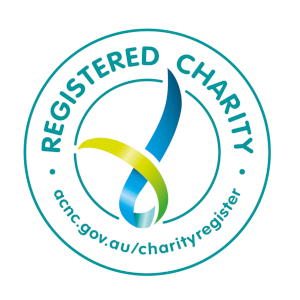What are the steps that can be taken in preparation of standing down from a primary carer's role and what will the impact be for both the carer and recipient.

According to the Australian Bureau of Statistics, in 2015, there were 2.7 million unpaid carers in Australia and with 96% of all primary carers being a family member, the important role that families and carers have in the lives of people with disability should not be underestimated.
The introduction of the NDIS has brought a change for you as a carer. This is especially true when you are no longer able to be the primary carer for the person you care for. This can be an emotional and stressful experience for all involved. Within a person’s NDIS plan, succession planning can be included in the form of additional support staff.
A Carers Statement is a document provided at a planning meeting which outlines the impact that the caring role has on your own personal needs and capabilities. This is an ideal time to disclose illnesses, travel plans, returning to work, study, ageing or your general capacity for a reduced caring role.
There are many social, emotional and practical steps to consider before reducing the level of care you provide.
Some of the social and emotional steps are outlined as follows:
- Have the conversation. Talk with the person you care for so that you are able to understand their desires and vision for the future. Include them in the planning as much as possible.
- Support the person you care for to nurture a peer support network or participate in community activities to enable them to develop community connections. When transitioning primary care to another person, a strong sense of participation in the community or having a support network can lessen the emotional impact of having a long- term caring situation change.
- You, as the carer, may also wish to consider joining a carer peer support group. This is a good way to connect with other people who may be going through a similar situation.
- You may wish to access a counselling program through the Carer Advisory line or by contacting IDEAS or other networks. These can offer emotional support and help you through the process when making the decision to leave the caring role.
- Consider speaking with other family members about their interest and capacity to take on parts of the caring role. It is important however to limit your expectations around siblings or other close relatives’ willingness to take on either the primary or other parts of the caring role.
- Have the conversation with the NDIA (planner, access partner or local area coordinator) during a planning or review meeting. You can do this either through providing a carers statement or by documenting your reduced hours of care in the preplanning or plan review material that is provided during the planning meeting.
Practical Steps to Consider
The best way to approach a Carers Statement is to think about all the things that another person would need to know in order to provide the same quality of care that you do.
Examples may include:
- How does the person currently communicate their needs?
- What is the best way for others to communicate with them?
- What are their current daily needs, medical and specialist appointments, medications, medication reminders, personal care abilities and any specialist equipment such as the use of a wheelchair, that can help explain to the person/s who take over your caring role, what this will entail.
- Document the person’s Medicare details; Centrelink details; GP and specialist contact details; where applicable - the location of a parent’s will or testament; contact details for people of importance and their connection to the person, for example, support staff and funeral director.
- What are their likes, dislikes, favourite activities, people they enjoy being with, some information about their past, their strengths, their hopes and wishes, and what they would like to have happen in the event you are no longer able to care for them.
- Who are the people that you as the carer regularly have contact with – doctors, care workers, nurses, teachers, friends, caseworkers, psychologists, specialists, family members. Write down all their contact details and keep these up to date.
- Where possible, find out as much as you can about the potential future of the person you care for based on their health condition, psychosocial well-being and/or disability. Think about how you would need to adjust the care provided over time - for example, if the person you care for has a degenerative condition, they will most likely require adjusted care, as their condition progresses. A person with a disease of the central nervous system, such as multiple sclerosis, for example, may require additional physical support such as a wheelchair, even though currently, they are able to walk by themselves.
- Their goals, desires and ideas can change frequently. Creating a reoccurring time in your calendar to check through the information documented in the succession plan, may help to ensure any changes are reflected.
- Ensure the Succession Plan is modifiable
Information sourced from ‘The Emotional and Practical Considerations for Succession Planning and the NDIS’ Factsheet, Carers Australia.


